Examining Elizabeth’s Harrowing Journey In Bioshock Infinite: Burial At Sea
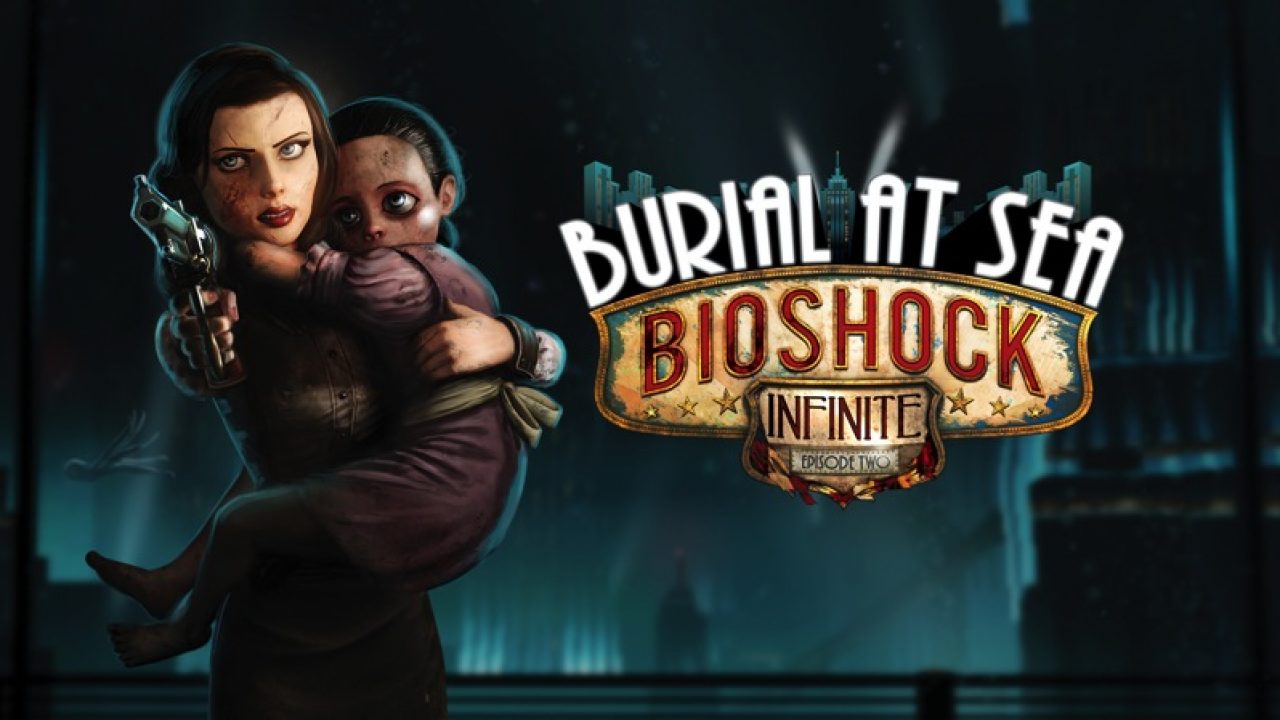
Nearly eight years after its release, Bioshock Infinite remains an ambitious and controversial video game. The game had a notably troubled development cycle that result in many design ideas being scrapped or changed before the game’s final release. In addition to drastic changes in game design, some of the major story and character concepts shifted throughout development. In terms of critical reception, Bioshock Infinite‘s imperfect exploration of subjects like classism, racism, religion, American Exceptionalism, and violence become a lightning rod for controversies with a variety of different groups of people. The game’s exploration of these topics has contributed to a sense of long lasting controversy that has helped shape the game’s image. Lastly, the game was the final game from Irrational Games, an iconic studio that was closed after completion of the game’s post launch content.
For all its flaws, Bioshock Infinite still stands as an incredible accomplishment in video game design and storytelling. The game was lauded for its incredible art direction, its solid mechanics, and its ambitious design ideas. The story was also praised, with special appreciation for the relationship between protagonist Booker Dewitt and companion character Elizabeth. Elizabeth served as an important predecessor for other highly emotive companion characters. The young woman was brought to life with motion capture by Heather Gordon, along with incredible voice work by Courtnee Draper. Lastly, the ambitious and ambiguous ending of Bioshock Infinite left a lasting impression on many players and launched countless theories about how players should interpret the ambiguous and mind-bending conclusion.
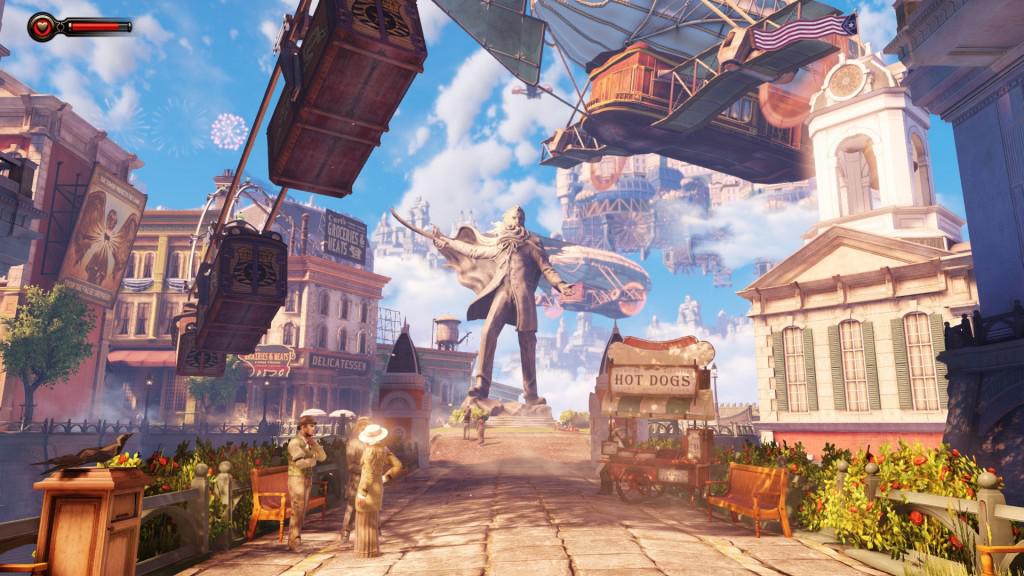
Irrational Games released several Downloadable Content Packs to support the game, with the most important being Burial At Sea. Released in two parts across 2013 and 2014, Burial At Sea returned to Rapture, the iconic underwater city from the first two Bioshock games (a city which had a quick cameo in Bioshock Infinite). Burial at Sea includes a version of Bioshock Infinite‘s Booker Dewitt and Elizabeth, though the Booker in Rapture is not the same man who accompanies Elizabeth in Bioshock Infinite. While Booker plays a key role in Episode 1, the DLC is Elizabeth’s story. Burial at Sea allows the player to play as a woman for the first time in the series. Overall, the story focuses on Elizabeth’s harrowing journey through Rapture as she jockeys with a host of characters from the original Bioshock including Dr. Yi Suchong, Atlas/Frank Fontaine, and Rapture founder Andrew Ryan.
Burial At Sea remains of one of few pieces of essential single player Downloadable Content across video games. The story brings closure to some lingering questions about Bioshock Infinite‘s story and connects back to the story of the original Bioshock. In terms of gameplay, Burial At Sea Episode 2 is the rare instance where a studio radically changed a game’s systems for DLC. For Episode 2, where the player controls Elizabeth, the team at Irrational Games tweaked the game to include more stealth and survival horror elements. Elizabeth can incapacitate unaware enemies with the Skyhook melee weapon and knock out her enemies with specialty crossbow bolts. These mechanical changes make the DLC feel more in line with the original Bioshock and help illustrate the harrow nature of Elizabeth’s journey. Finally, Burial at Sea elegantly ties together of themes of the original Bioshock with its successor, delving into the themes of exploitation, power, choice, and sacrifice.
Elizabeth’s Journey To Punish Comstock – Burial At Sea: Episode 1
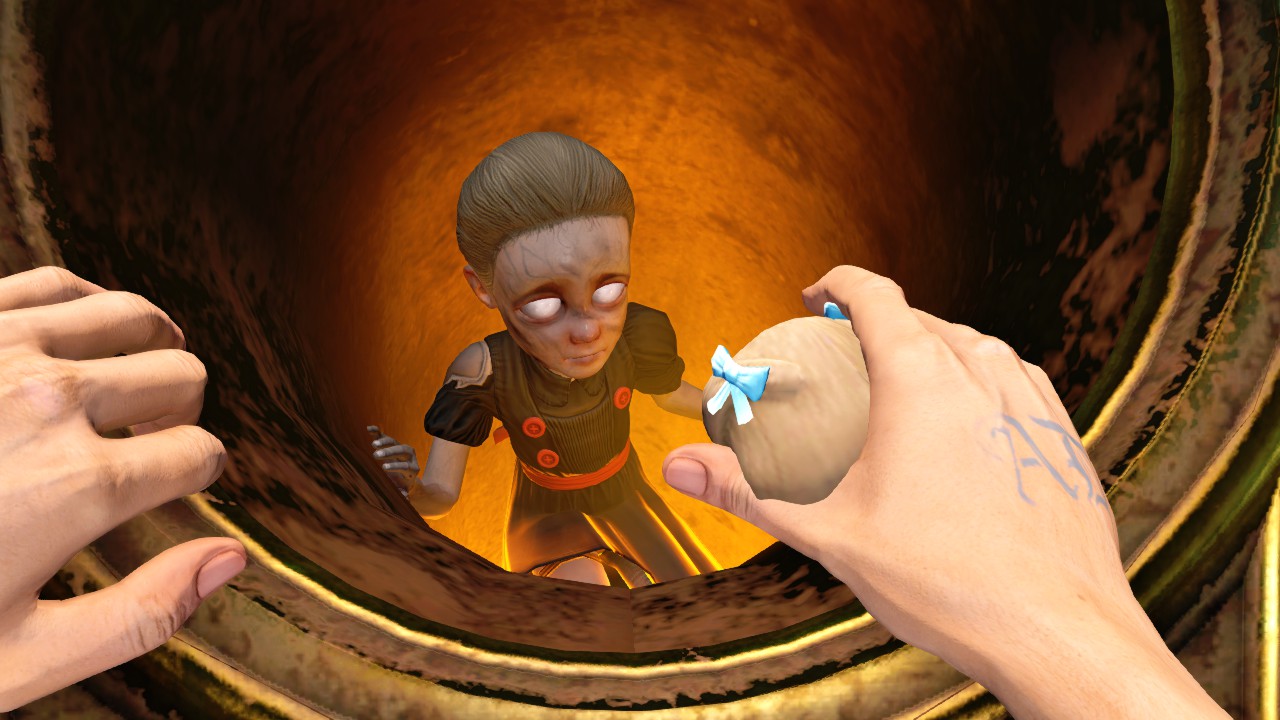
While Burial At Sea: Episode 1 is not as well regarded as Episode 2, any discussion of Episode 2 requires a clear understanding of the events established in Episode 1. The first DLC campaign establishes the setting and tone of the story while also serving as the inciting incident for Elizabeth’s journey in Episode 2.
While Booker plays the role of protagonist in Episode 1 and Elizabeth plays the role of companion character (a mechanical retreat of Bioshock Infinite), the relationship between the two is quite different from the main game. Burial at Sea: Episode 1 takes place on December 31, 1958. On eve of the Rapture Civil War between Andrew Ryan and Frank Fontaine/Atlas, a mysterious woman enters Booker Dewitt’s Detective Agency, where Rapture’s version of Booker is residing. Elizabeth seeks Booker’s help in tracking down an orphaned girl known as “Sally”. Booker, who has a connection to Sally, believes the girl is dead but Elizabeth replies that “lost isn’t dead”. Booker agrees to assist Elizabeth in her search for Sally, becoming her partner in the search.
From her dramatic, film noire inspired introduction in Burial At Sea: Episode 1, it is clear that Elizabeth has changed since the player last saw her in Bioshock Infinite. The freely joyful Elizabeth seen early in Bioshock Infinite is gone. By the time of Burial At Sea, Elizabeth has grown into a more skeptical and reserved young woman. Her outfit has changed to fit the setting of Rapture, with an outfit that was inspired by the female characters in classic film noire. While Elizabeth assist Booker in the quest to find Sally throughout Episode 1, she remains cryptic about her intentions and motivations. When pressed about her arrived in Rapture, Elizabeth cryptically asserts that she came to Rapture for a “man” and she is here to “collect a debt”. Unlike in Bioshock Infinite where Elizabeth freely reveals information about herself to Booker, Elizabeth now works to conceal her backstory and her motivations from her companion in Rapture.
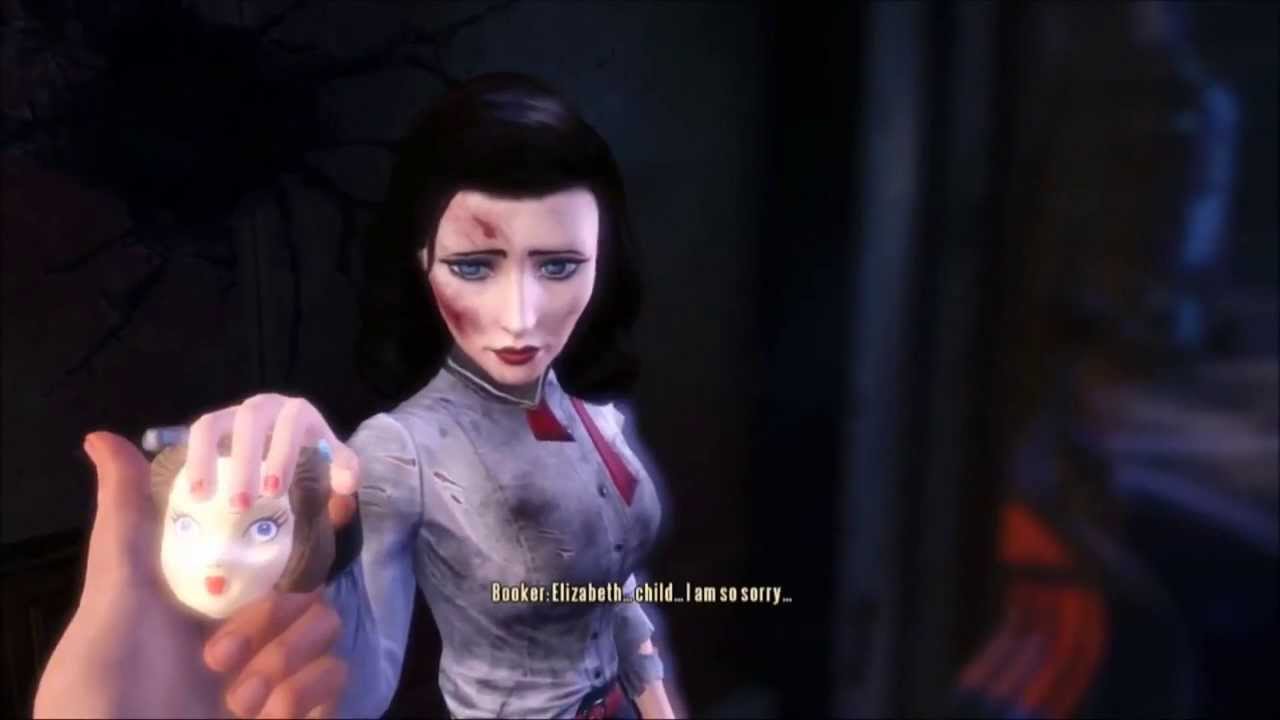
When Booker and Elizabeth finally find Sally at the end of Burial At Sea Episode 1, it is revealed that Sally has become a Little Sister, the exploited children from the previous Bioshock games. In order to force the frightened Sally to leave the vent, Elizabeth encourages Booker to turn up the heat, a choice that will cause the girl pain. As Booker tries to remove a struggling Sally from a vent, he is overwhelmed by flashes of memory that he has previously lost. The version of Booker in Burial At Sea is actually a variant on Comstock, the prophetic tyrant who ruled Columbia. Like the other versions of Comstock, Rapture’s Booker/Comstock tyrant worked to abduct Elizabeth (then named Anna Dewitt) from a different dimension so that he could have an heir to take over his work. Unlike in the Bioshock Infinite timeline, where Comstock succeeded in taking Anna Dewitt (Elizabeth) from Booker, the version of Comstock that players plays as in Episode 1 was unable to wrench the infant away from her father (a different version of Booker Dewitt). In the resulting struggle, Anna is caught between two universes and cut in half.
Guilt ridden and looking to escape the memory of killing a child, Comstock asked Rosalind Lutece and her “brother” Robert, the scientists responsible for creating tears in reality, to place him in an alternate reality. The process of going through a tear in reality caused Comstock to forget his memories, allowing him to open a detective agency in Rapture without being tortured by his past sins. While the character does lose the harrowing memories of Anna’s death, the character relationship with Sally and his gambling and drinking addictions may hint at some residual trauma that lingered somewhere in unconscious.
In the final moments of Episode 1, as Comstock understands his entire life for the first time since trying to escape his sins, the former prophet of Columbia attempts to apologize to Elizabeth. Reverting back to his more formal style of speaking, Comstock tries to reach out to Elizabeth. The former prophet offers his hand, asserting that he is “so sorry child”. Stone faced and scoffing at his pitiful apology, Elizabeth coldly watches as a Big Daddy impales Comstock/Booker with its drill, splattering her with his blood. Episode 1 concludes with the former prophet’s grisly, brutal murder, with Sally and Elizabeth’s fate unknown.
From Elizabeth’s cryptic quotes, along with her actions in the final moments of Episode 1, the audience can surmise that Elizabeth came to Rapture with the express purpose of tracking down Comstock. Because of the multiple dimension and tears seen in Bioshock Infinite, it is possible that Elizabeth has been tracking down every version of Comstock that she can identify. When pressed by Booker/Comstock for the reasons behind being in Rapture, Elizabeth states that she deals in “debt collection”, a call back to Bioshock Infinite’s “wipe away the debt” line from the first scene. Elizabeth’s choice to use Sally as a emotional trigger for Comstock’s memories, along with her decision to let Comstock die as a way of punishing him for his sins, sets the stage for Elizabeth’s journey in Episode 2, which will deal with the fallout from these huge choices.
Elizabeth’s Journey in Burial At Sea Episode II
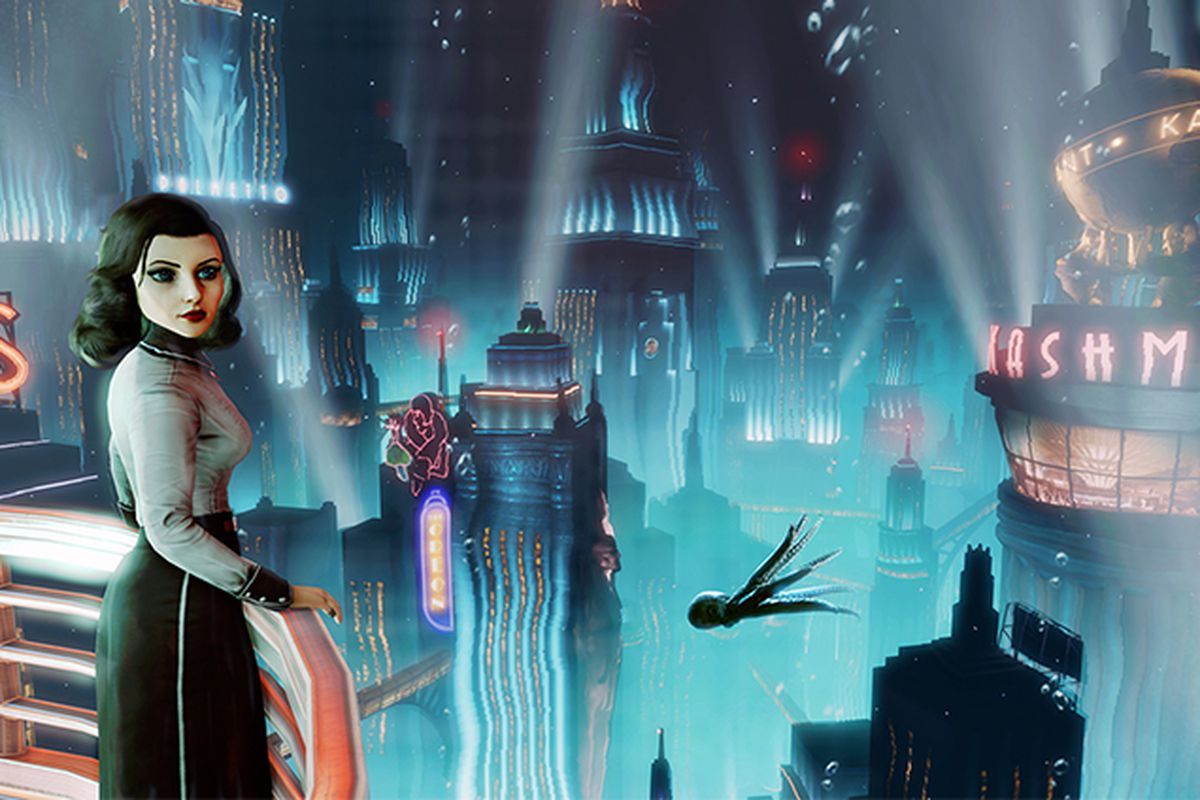
The themes of Elizabeth’s Journey in Bioshock Infinite: Burial At Sea draws many connections between the original Bioshock and Bioshock Infinite. Elizabeth’s narrative arc explores a variety of concepts including exploitation, control, choice, sacrifice, and the cycles of violence. Elizabeth is captured by Atlas/Frank Fontaine and coerced into working for him under the threat of violence against both herself and Sally. Tormented by her own choices and her desire to atone for her moral failure, Elizabeth’s quest to save Sally remains one of the most powerful stories in gaming. This journey allows the writers and designer of Burial at Sea to return to and reexamine a variety of topics that are crucial to the series as whole. Due to this, Burial at Sea acts as a fitting conclusion to the Bioshock series thus far.
Systems of Exploitation
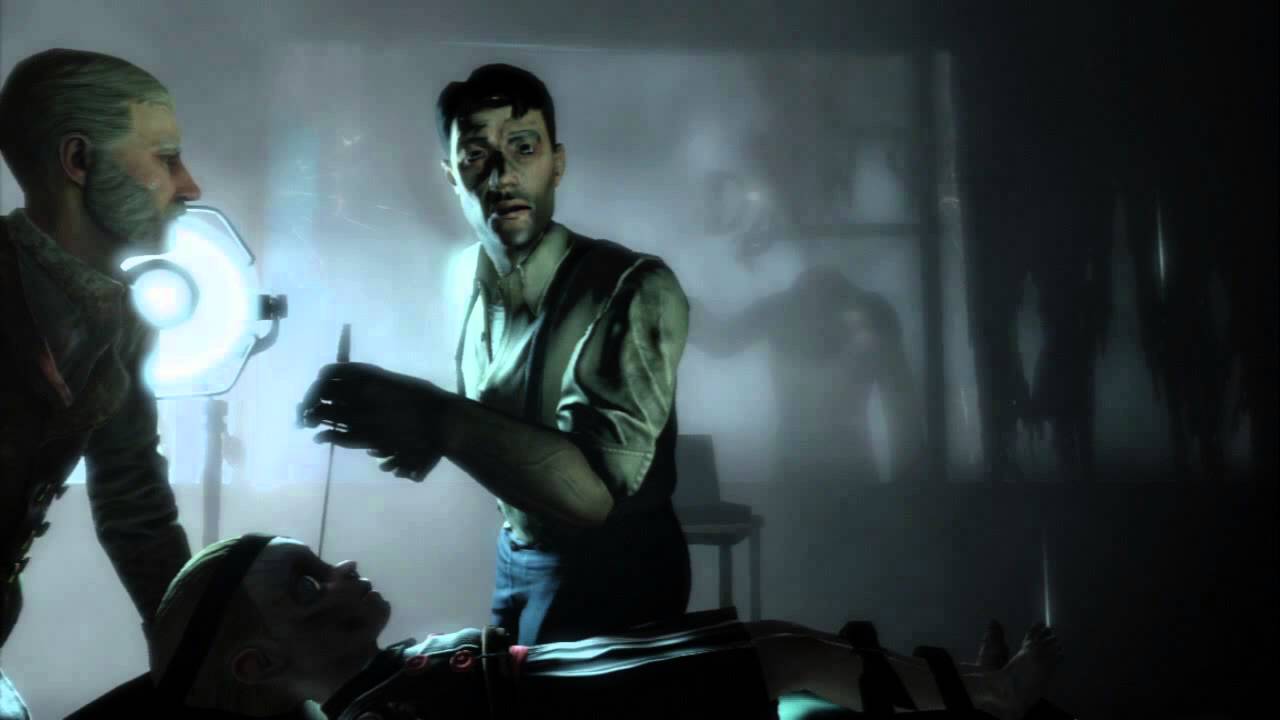
By returning to Rapture and the little sisters, Burial at Sea delves into a key theme of the Bioshock series: exploitation. While Columbia included exploitation of its lower classes, along with many minority characters, Rapture’s little sisters are a crucial crystallization of exploitation within the series. These young girls scavenge and supply the city with ADAM, the material needed for the gene rewriting powers known as Plasmids. In Burial At Sea: Episode II, Elizabeth eloquently explains The Little Sisters as “girls with gold in their stomachs”, which is an apt analogy for a group of children treated strictly as an economic resource. These children, who are savagely torn from the blissful throes of childhood, are a critical and morbid part of Rapture’s economy and key ingredient in the city’s descent into madness.
In Burial At Sea: Episode 2, the words and actions of both gangster Frank Fontaine (masquerading as the revolutionary Atlas) and Rapture founder Andrew Ryan demonstrate that Little Sisters are viewed as little more than a economic, exploitative, and disposable resource. Atlas, who captures Elizabeth at the start of Episode 2, repeatedly uses Sally to control Elizabeth, threatening to hurt the child if Elizabeth does not cooperate with his plans. Early in Episode 2, Atlas reminds Elizabeth that there are “quick ways to harvest a Little Sisters, and slow ways”. Atlas’s coldness and cruelty are in line with his attitude in the original Bioshock (chronologically set closely after Burial At Sea), where Atlas warns protagonist Jack that the little sister in front of him is “not a girl anymore”. Clearly, Atlas and his acolytes do not view the Little Sisters as human beings but rather as a important resource to be used and discarded.
While Andrew Ryan claims to be far superior to Frank Fontaine/Atlas, the founder and visionary behind Rapture has a similarly inhumane perspective of the Little Sisters. When Andrew Ryan communicates with Elizabeth late in Burial At Sea: Episode 2, Ryan offers offers Elizabeth any number of little sisters in exchange for an alliance, asserting that he has “many Little Sisters”. This careless statement demonstrates that he views Little Sisters as assets rather than children; they are commodities to be used in a negotiation. Ryan fails to understand that Sally has emotion significance to Elizabeth that goes far beyond the ADAM in her stomach.
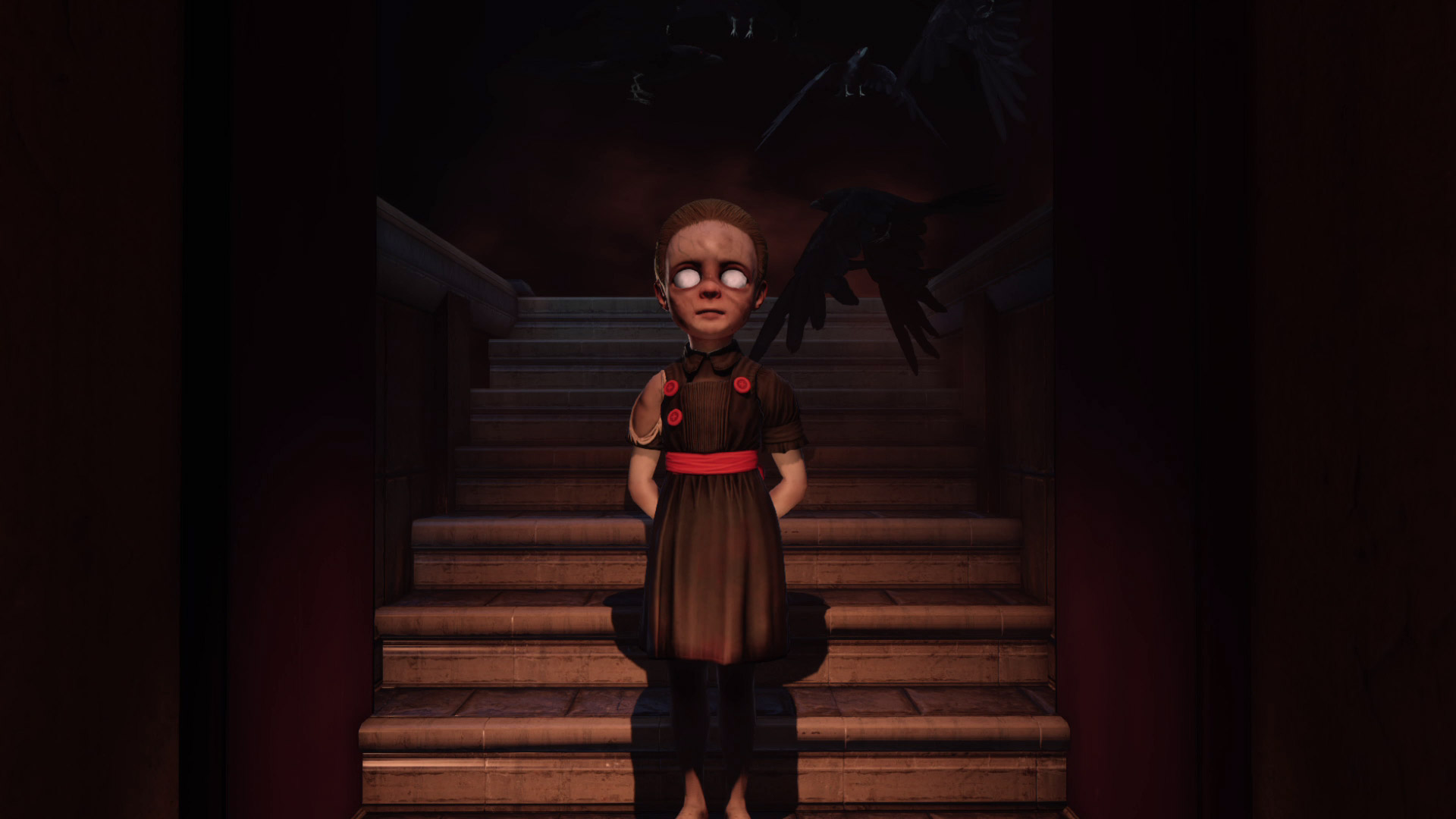
Elizabeth’s profound disgust towards Little Sisters and Rapture’s citizens stems not only from how the people of the city exploit the children, but also her role in using Sally for her own ends. In Burial At Sea: Episode 1, Elizabeth uses Sally as a means of forcing Comstock to remember his horrible past sins. Her desire to punish Comstock overwhelms any sense of duty or obligation she feels about protecting Sally from harm. While Elizabeth punishes Comstock for his crimes, a decision she seems to regret in Episode 2, this choice results in Atlas and his men capturing the young girl. In her mind, Elizabeth is directly responsible of robbing Sally of a potential protector and allowing her to fall into Atlas’s foul hands. In the second half of Burial at Sea, an emotionally wounded Elizabeth works to atone for her role in exploiting and hurting an innocent girl.
Elizabeth’s guilt is brilliantly showcased in the opening sequence, where Sally intrudes upon Elizabeth’s dream sequence. In the opening sequence, Elizabeth finds herself in an idealized Paris, the place she dreamed of during her imprisonment in Columbia. As the player traverses this beautiful city-scape, Elizabeth crosses paths with a pre-little sister Sally, who chases a red balloon through the streets. As Elizabeth chases Sally, the dream transforms into a dark and stormy nightmare. Elizabeth is drawn back to consciousness as she follows the little sister through a darkened doorway, where she witnesses multiple Sally’s screaming in pain as they struggled in closed vents. The entire sequence demonstrates that Elizabeth feels tremendous guilt for what she has done to Sally.
A Protagonist Caught Between Powerful Forces
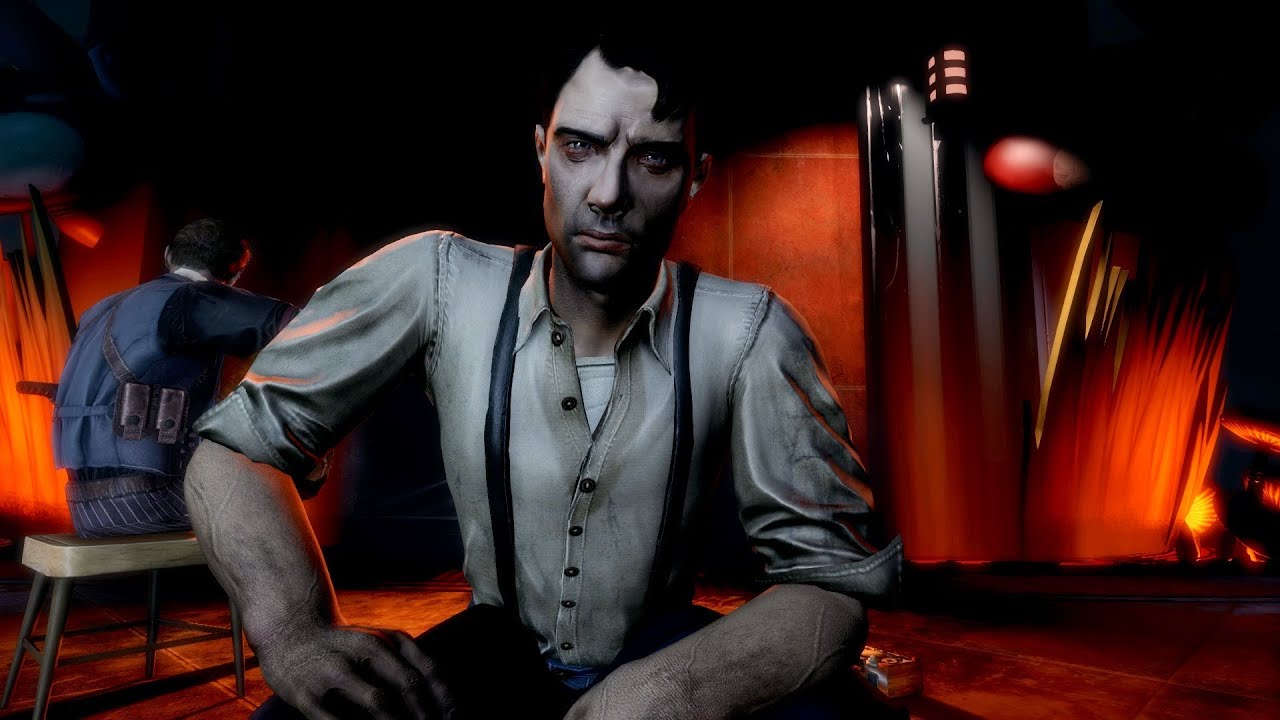
In Burial At Sea: Episode 2, Elizabeth finds herself trapped in the conflict between Atlas/Frank Fontaine and Andrew Ryan, the two most powerful men in Rapture. This places Elizabeth in a similar as Jack in the original Bioshock, who was another protagonist caught in the battles between Rapture’s two titans. While Elizabeth has her free will (unlike Jack), both Andrew Ryan and Atlas treat the brilliant young woman as someone less important than themselves, perhaps even less than human. Both characters berate Elizabeth with insults that share similarities to those used against Jack.
After Elizabeth rejects Andrew Ryan’s offer of an alliance, Ryan insults her saying “You’re not a hero. You’re not even a parasite. You’re just a rube. And Andrew Ryan has no time for rubes”. Ryan is incredulous that Elizabeth will not accept his offer, trying to make the woman feel small and powerless. Similarly, Ryan taunts Jack as useless and someone that will easily forgotten in the original Bioshock. Ryan insults Jack, saying “‘Who was that’, they’ll say, as they point to the sad shape hanging on my wall, ‘who was that’”. Once again, Ryan sees the individual in front of him as nothing, as a no one not worthy to be part of his system. In both cases, the main characters are treated as something less than human, as beings outside of Rapture’s power structure.
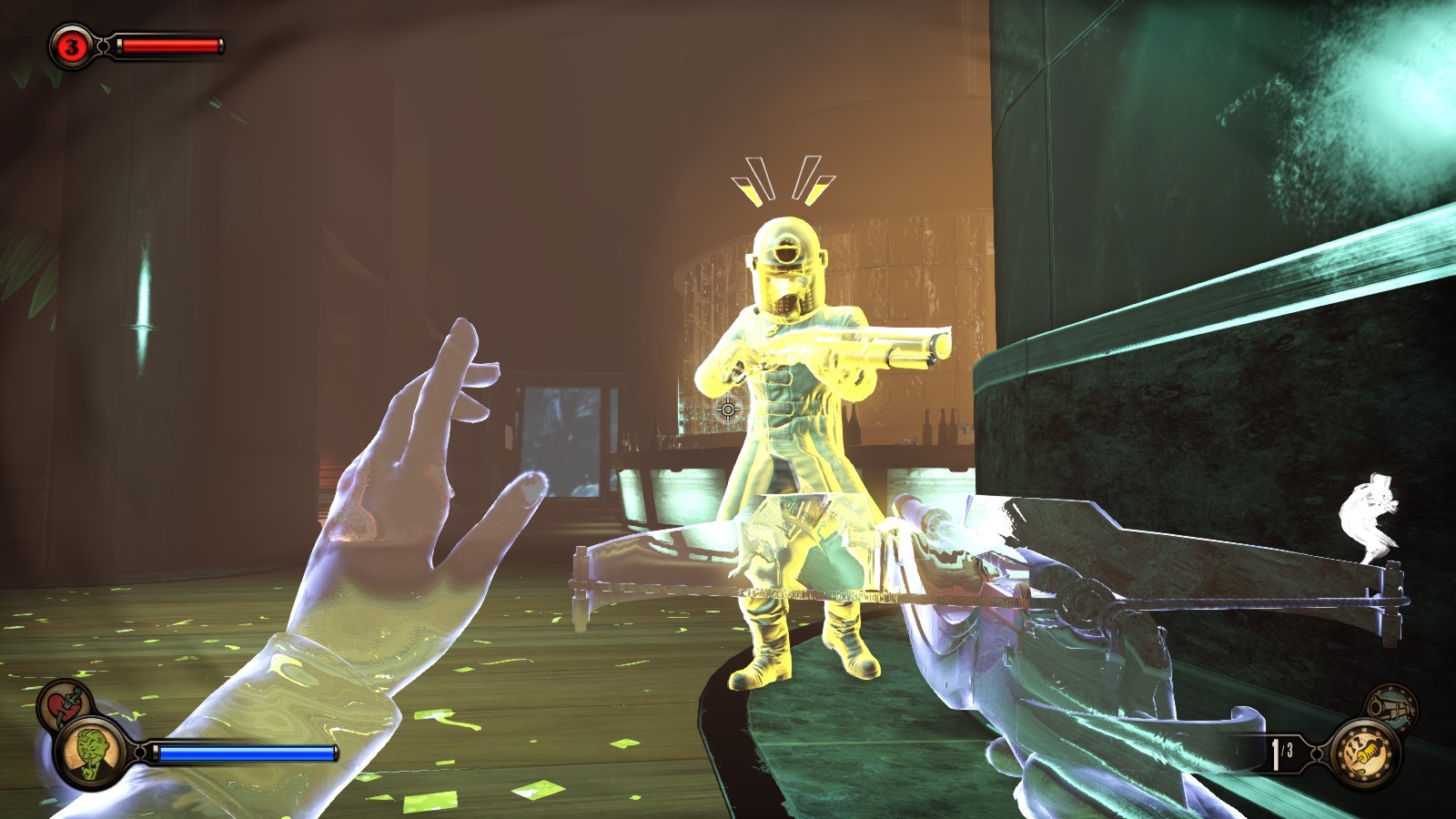
Being in a position of weakness is also a key part of the gameplay of Burial At Sea Episode 2. Without her ability to open tears and change reality, Elizabeth must accept being “an ordinary girl with an ordinary finger”. While Elizabeth morphed into an almost god-like figure at the end of Bioshock Infinite, all of Elizabeth’s connections to her abilities has been stripped of her in the DLC. Episode 2 incorporates elements of stealth and survival horror, which were absent from the more action heavy Bioshock Infinite and Burial At Sea: Episode 1. While Bioshock Infinite and Episode 1 include action elements from modern shooters like self refreshing shields, fast paced gameplay and high powered weapons, Episode 2 generally gives players less destructive/offensive powers, requires more careful use of health items, and often forces the player to make difficult purchasing choices with their relatively limited resources.
The distinct gameplay of Burial At Sea: Episode 2 is key to the success of Burial At Sea, as its gameplay synchronizes neatly with Elizabeth’s role within Rapture. While Elizabeth can use the skyhook from the previous episode as a melee weapon, her strike will only incapacitate a target is unaware of Elizabeth. Enemies who spot the player will only be knocked back with melee attacks; a significant power downgrade compared to Episode 1. While characters like Booker can shoot through enemies with ease and men like Andrew Ryan can send an army of goons to do their dirty work, Elizabeth is completely alone. With limited resources, Elizabeth and the player are forced to battle through dangerous groups of both Atlas and Ryan’s men, with plasmid designed for defense and stealth rather than aggression. These design choices make Burial at Sea: Episode 2 feel like the odds are stacks completely against Elizabeth and that her own choices have put her in this difficult situation.
The Choice And The Price
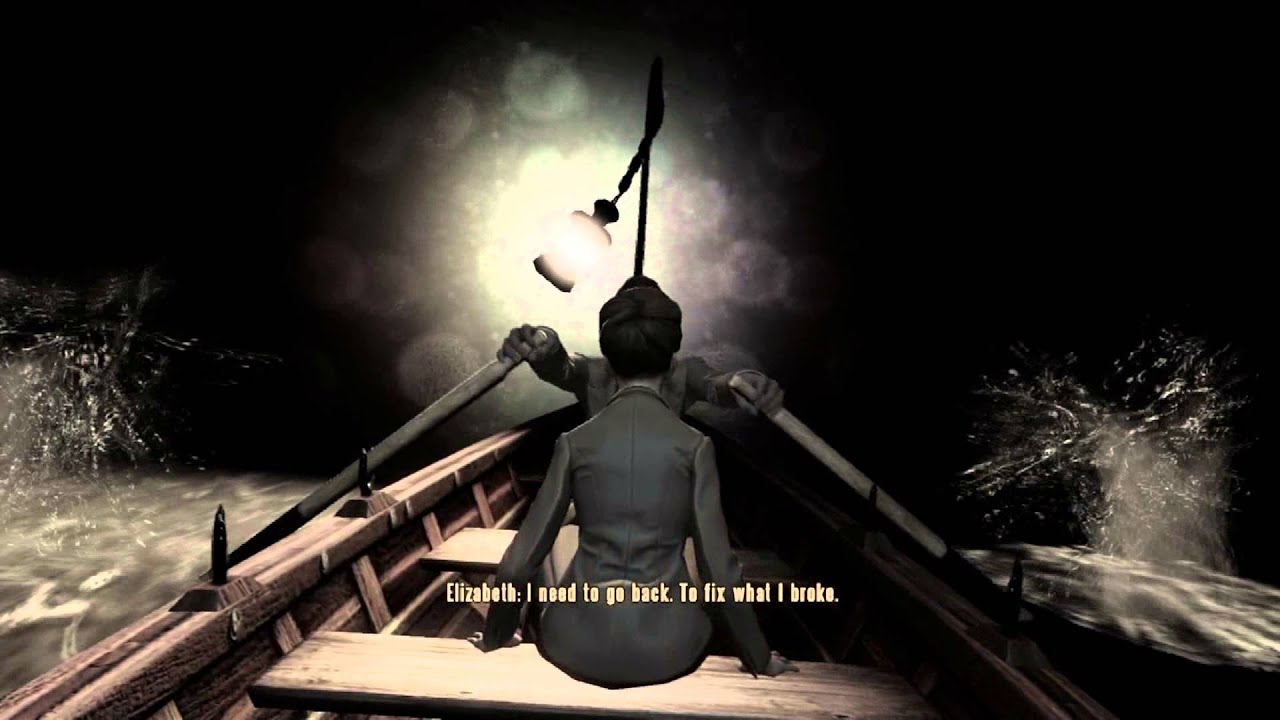
Choice, or the lack of it, has been a key element of the entire Bioshock. While the first game gave players the binary black and white choice of harvesting or saving the little sisters, the player inhabits the role of a individual with little to no free will, activate by the iconic code phrase: “Would You Kindly”. Bioshock Infinite famously included the “bird or the cage” choice, an early moment that seems significant but ultimately has little to no effect on the story. In short, the Bioshock series has a strange relationship with choice, sometimes reveling in choice, sometimes completely stripping the player of it.
In Burial At Sea, choice is an important theme of the story, but choice is not a huge part of the gameplay. Other than the choice of incapacitating or killing enemies, there is very little the player can do to change the story. However, from a narrative perspective, Burial At Sea: Episode 2 hinges on Elizabeth’s choice to return to Rapture. This choice seems trivial, until we learn that Elizabeth was actually killed by the Big Daddy when it attacked Comstock/Booker at the end Burial at Sea: Episode I. This revelation leads to a flashback cutscene in which the Lutece Twins row Elizabeth back to the lighthouse to reenter Rapture. This key scene reveals that Elizabeth’s choice to return to Rapture, to reenter a world she had died in, will result in her being stripped of her powers. In a Voxophone Diary collected later in Episode 2, scientist Rosalind Lutece explains that she and her brother were unwilling to consider returning to world where they died because it would make them “become flesh”. This experience serves as a foil for Elizabeth, who chooses to abandon her cosmic powers and return to Rapture.
The loss of Elizabeth’s powers create an interesting paradox for the character. She makes the choice to return Rapture when she has the ability to see “all the doors, all the possibilities”, but she has lost her vision and powers by the time Burial At Sea: Episode 2 begins. The powers that Elizabeth demonstrated throughout Bioshock Infinite, including the god-like power demonstrated at the close of the core game are completely gone. This loss is best symbolized by Elizabeth’s hand, which is whole once more, while previously being marked a missing digit on her pinky finger. In short, Elizabeth has given up her powers to return for Sally, though the results of her return to Rapture remain veiled to her.
The loss of her immense abilities creates an intense feeling of drama for the player as Elizabeth struggles with her own disorientation and doubt over her decision to return to Rapture. The evocative voice work by Courtnee Draper, who gives a towering, emotional performance, only further hammers home the disorientating and harrowing nature of Elizabeth’s journey. As Elizabeth battles through Rapture, experiencing terrible pain, doubt, and grief, she is blind to where her choice will ultimately lead her. In one of her darkest moments, as she and Sally are being torture by Atlas/Fontaine, Elizabeth lashes out at herself and at a projection of Booker she sees in her disoriented vision. Facing tremendous pain and immense confusion about her choice to return to Rapture, Elizabeth erupts, saying that “if I saw so much, why just send myself to the slaughter”. For the girl who once “saw all the paths, all the doors”, fumbling around alone in the darkness is the ultimate challenge to her resolve and beliefs.
A Change You Do Not Live To See
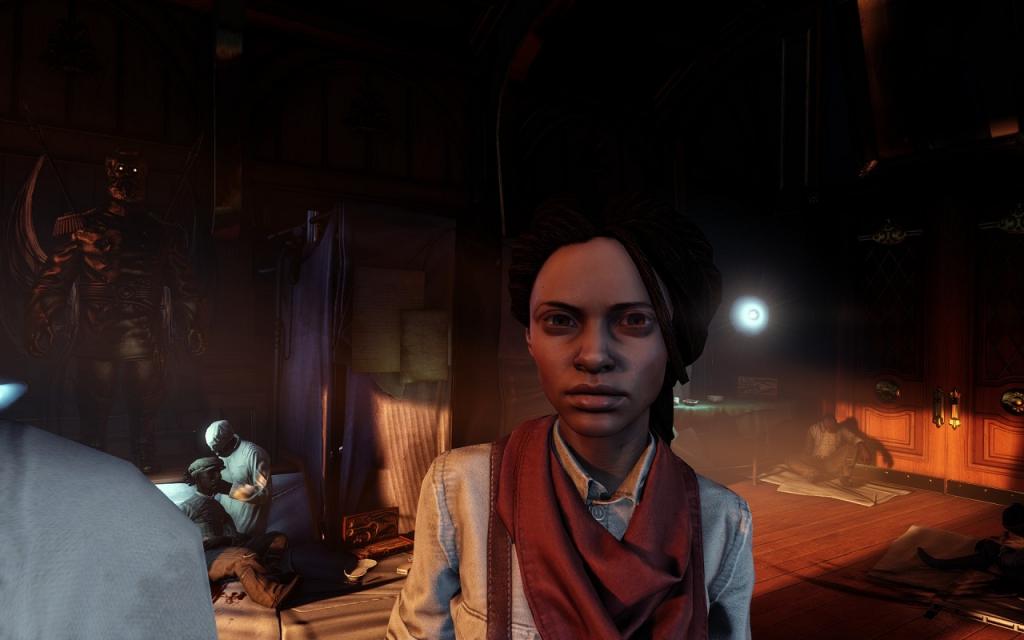
The concept of choice and faith (used here in a non-religious context) are also crucial to the largest retcons to Bioshock Infinite‘s storyline: the death of Daisy Fitzroy. One major criticism of Bioshock Infinite‘s story was the portrayal of African American revolution Daisy Fitzroy. In the story, Daisy Fitzroy takes industrialist Jeremiah Fink and his son hostage, holding a gun to their head behind a sheet of glass. Elizabeth sneaks through a grate and stabs Daisy in the neck, preventing the murder of the young boy. This moment was criticized because many felt it did not fit Daisy’s personality and beliefs. Some criticism was also leveled at Booker’s later assessment that “Daisy it just as bad as Comstock”, seeming to assert that an oppressed revolutionary is as bad as the tyrant who oppresses her. While the audience must keep in mind that Booker is not the best judge of character (Booker has his own morbidly dark past and tremendous lapses in judgement), it still feels problematic that some players in Bioshock Infinite came away with the impression that Daisy is the same as Comstock.
This scene and Daisy’s character as a whole, were directly addressed In Burial At Sea: Episode. In the midst of her journey, Elizabeth returns to Columbia (on a fetch quest for Dr. Suchong) through a tear in the dimension, which allows the writing team to make some clever retcons. During this new sequence in Columbia, Elizabeth overhears a conversation between the Luteces Twins and Daisy Fitzroy. This moment occurs just before Daisy will threaten Fink and his son and drastically changes how the player sees Daisy. In the discussion, Daisy refuses to hurt Fink’s son, but the Luteces assert that she need only appear to be willing to harm the son. The Luteces explain that in order for Fitzroy’s revolution to succeed, Elizabeth has to kill her. The twins push Daisy to decide what matters more: “her part in the play” or “the play itself”. Daisy, who values the help the Luteces Twins have given her and the future of her compatriots, believes she must choose between the success of her revolution and her own survival. In the end, Daisy Fitzroy chooses to trust the Luteces’s vision, and the revolutionary heads into the bloody showdown that will end with her death.
While some found player this change to be a heavy handed retcon, the choice made by Daisy thematically mirrors the struggle Elizabeth faces in the final moments of Burial At Sea. Throughout her journey, Elizabeth understands that Atlas will revoke any deal they make and will not hesitate to kill her. In the final moments of her life, Elizabeth sees a brief glimpse of a future where Jack liberates Sally from Rapture. With this vision in mind, Elizabeth understands that her role is to help end the cycle of exploitation found within Rapture. This was the salvation that she saw when she first chose to return to Rapture, this was the reason she came back. By giving Atlas the “Ace in the Hole” (Jack and the code to control him) Elizabeth can be the catalyst for Atlas/Fontaine’s eventual ruin and Sally’s salvation.
As Elizabeth faces Atlas, she comes to understands that she will not survive her journey. In her final moments, Elizabeth hands over the trigger code for Jack (the famous “Would You Kindly”) and confronts Atlas. With grim foreboding, Elizabeth states: “we both know what happens now…just get it over with”. In response, Atlas smashes Elizabeth in the head with a heavy wrench. As she lays dying from the blunt force trauma, Elizabeth sees a vision of all the events that will occur in the original Bioshock, including a final scene of Jack liberating Sally from Rapture (which seems to make the Good Ending canonical). With his secret weapon in tow, Atlas leaves Elizabeth and Sally. Near death, a bloody Elizabeth extends her hand towards Sally, who sings a snippet “La Vie En Rose” (a callback to Elizabeth’s Paris dream). With her final sacrifice and the arrival of Jack in Rapture, Elizabeth has redeemed herself and dies knowing that one day Sally will be safe and that the system of exploitation can be broken.
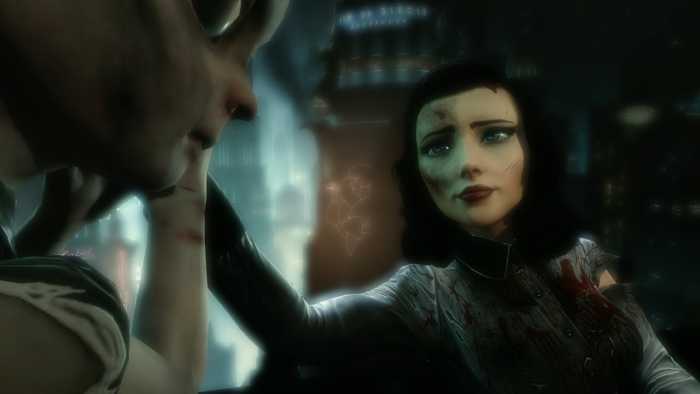
When looking at Elizabeth’s story in Burial At Sea, many Bioshock fans may find themselves returning to a quote by another important woman in the Bioshock series: Bridget Tenenbaum. Elizabeth’s quest to save Sally, who Elizabeth comes to values as more than just a Little Sister embodies Tenebaum’s statement that “to save one life is to save the world entire” (a quote from the Talmud). In a game series where there are multiple universes made from different “constants and variables”, one can begin to question the importance of any one choice. Elizabeth’s journey acts as a final confirmation that choice matters.
Burial At Sea: Episode 2 is also significant as it is the only Bioshock game that can be completed without killing a single enemy. Elizabeth (and the player) can choose to use non-lethal weapons to incapacitate enemies including melee attacks with her skyhook, sleeping tranquilizers, and harmless knock out gas. This gameplay decision helps pounds home the importance of choice within the narrative. Elizabeth has a choice about how she confronts the horrors of raptures and her how past failures. As Andrew Ryan stated in the original Bioshock, “We all make choices, but in the end our choices make us”.
By sacrificing her gifts and returning to Rapture, Elizabeth is not only able to save Sally but she is also the catalyst for the destruction of Ryan, Atlas/Fontaine, and their systems of exploitation. While the Bioshock series may one day continue, it will take a herculean effort to surpass Elizabeth’s harrowing, emotional, and bittersweet journey through Rapture, which stands as one of greatest and most emotional pieces of Downloadable Content ever created.
What do you think? Leave a comment.








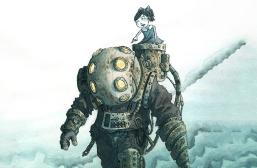


Elizabeth is one of my favourite videogame characters of all time.
I love Burial at Sea. It fixes Infinite’s problems and the gameplay is their take on making it more Bioshock-y.
I like to think that there’s a universe tucked away somewhere where Booker is on a roadtrip with Elizabeth going through the typical single dad experience with an only daughter who’s rebellious and hard headed despite he himself is secretly battling PTSD from the Vietnam War. But during this time an Elizabeth from another universe secretly likes to watch them as she obviously just went through the events of infinite and yearns for a life like the one she’s witnessing because she just killed booker like a week ago with the homies but even she knows despite the fact that she knew the outcome, she can’t deny how much she loved booker as a father figure and friend. And to her horror, this normal Elizabeth is starting to show her abilities and it’s up to this version to protect this family from Comstock who has come to collect. Elizabeth has found the only universe with a happy outcome and she’s looking to protect it.
I’m drunk. Someone do a fanfic please.
I’m still a little confused on something, if Elizabeth was there right when Comstock was killed by the Big Daddy, and then she (the supposed “last” Elizabeth) was subsequently killed right after by the same Big Daddy, how did she then leave and come back to rapture?
Only loophole i’ve found. If Episode one’s Elizabeth is the last and she gets killed by the Big Daddy, who is the Elizabeth you’re playing as in 2?
This whole game makes absolutely zero sense.
Bioshock Infinite was terrible and so were the DLCs.
Personally I don’t like the thought of the events of BioShock being the result of Elizabeth’s actions. And Jack wasn’t much of a character to really make up for the bittersweet ending of Elizabeth’s story. Atlas is also not acting the same way he did in BioShock but is an obvious psychopath. I have some more issues with the story but there were also many things that I did like. Like seeing a still functioning Rapture, going back to Columbia and the idea of Fink and Suchong working together.
I’m playing through BioShock for the first time now, and I’m having the time of my life. I’m trying to put my finger on why I like it so much, but I think it boils down to enjoyable mechanics supported by a lush story/level design foundation that, despite it’s importance and quality, never seizes control. Audiobooks, the radio, and the design of the world and events hardly ever take your control away, allowing you to appraise the story while remaining engaged. The level designer and story writers must have been holding hands the entire time, because Rapture is basically the most important “character” of all. You don’t just see Rapture, you have to deal with it, grow in it, learn it’s tricks. The desperation of the ailed populace becomes clear while scavenging and evading security. The value of ADAM is shown by the difficulty of earning it. The corruption of Ryan’s ideals is heard in the wails of Splicers, and seen in the strange mix of capitalism and anarchy through which you acquire things like ammo, Eve and Hp. The city simply reveals itself to you. You are never forced to watch or learn, you do so organically as a matter or survival.
Exactly. There is no immersion in Infinite. No reason to explore and goof around. Its a poor imitation of the prior games
Elizabeth is definitely one of the best video game protagonists EVER.
I have 5 favorite video game characters ranked,
1. Elizabeth Comstock
2. Handsome Jack
3. Booker Dewitt
4. The white run guards from Skyrim
5. Widow maker
Great topic and well written. I learned a lot.
Elizabeth and Booker are canonically all dead and I am not okay with it.
I would like to hear your personal opinion on a theory that has been surfing around the series… Is Elizabeth a gender swapped alternate dimension Jack or is she a somewhat alternate little sister? Possibly Booker could be Jack or even Andrew.
Overall, I understand that they share similarities (both are children of the people who rule their respective cities), but I think they are not 1 to 1 comparable/gender swapped characters. To me, they are not the same character from different dimensions. Those are just my personal feelings.
I’ve heard the gender-swap Jack theory and I think it’s a good one. I personally think the end of the DLC proved the story leaned more towards Infinite then Bioshock though. If she were Jack she would be from Rapture. Instead this Elizabeth is our Elizabeth from Infinite. I love the theory but I think the ending of the DLC disproved it.
My problem with this dlc. It took all that lesson that you learnt in Bioshock 1 and completely craps on them for the sake of ramming the INFERIOR Infinite into the plot. In Bioshock 1, you learn that, yes. This is what can happen when man goes without morals and checks. High progress in science, art, and industry; but almost utter destruction from greed. Plasmids, Little Sisters, all produced from un-moral progress. This DLC wants to “claim” that no. No one in rapture created these great things because they didn’t have any morality or checks, but because 2 dimension hopping *** gave them all this tech via Columba and stuff. That is what is most offending about this. That no longer do we see what man is like unchecked, but that magical twins from god knows what dimension anymore will bring you tech and daises.
The worst part of Burial at Sea part 2 is how they re-wrote Daisy Fitzroy into a noble anti-hero who willingly lets Elizabeth stab her to death whilst holding a pistol to the kid’s head…yes it was post-story character re-writing and it was PAINFULLY OBVIOUS.
While I likes the game, infinite really messed with the story and added this multi universe stuff that’s hard to understand or makes no sense. So I just ignore infinites continuity
I played Bioshock infinite at launch, I tried to like it, I wanted to like it, but no matter what happened, it always rubbed me the wrong way.
I genuinely dislike the twist in ep. 1. The problem as I see it is that Elizabeth is killing off all the different Comstocks (which makes no sense as there are INFINITE UNIVERSES IN WHICH HE EXISTS), and seems to hate this one in particular due to the death of that specific Anna/ Elizabeth, when this is actually Booker’s fault. On top of that, she insists on him remembering why and thus needing Sally, but she could have plucked Sally through a tear, forced Comstock to remember, and then ended his life there.
I realize then that the DLC couldn’t happen without the series of events that actually occur, but much like everything else with Infinite, Elizabeth and the infinite universes take all the steam out of the story if you put it up to even the slightest scrutiny.
Bioshock Infinite was terrible and so were the DLCs.
I just finished every single bioshock… and now i’m questioning my own existence.
I don’t get how the older elizabeth exists at all if there was only one booker whose baby got beheaded at the portal. Shouldn’t the older one have disappeared like the others when she drowned her booker before he could have a baby? Also, I don’t get how ‘quantum superposition’ explains anything other then sounding so complex and science-ey that no one questions it; how does it make elizabeth come back if she died the first time and was the only one left?
Excellent analysis. A brilliantly written multiverse story like Bioshock would always leave room for interpretation as the smart writers know that this would create interesting discussions in the community and cement their story.
Just finished all of bioshock franchise yesterday. So i think all of the endings on Bioshock 1&2 might be canon because of this multiverse. It just a different choices between different universe.
So theres no multiverse where elizabeth and booker lived happily ever after?
I believe that there is one, but maybe that is just wishful thinking on my part. Additionally, while Bioshock 1 and Bioshock 2 have more or less “positive” and “negative” endings, Bioshock Infinite has a single ambiguous ending.
I loved seeing Rapture in its prime, it was very refreshing and making the fall and replaying the first game more disturbing.
I never understood the need to tie “Infinite” to the Bioshock Franchise. It would be a better Game to stand on its own, with a unique Name (like System Shock earlier).
This game is one of my most disappointing games of all modern games. It’s beautiful. Nice feeling. In fact I initially loved the travel system thing with the lines it was one of the funnest things to do. But for me this game just didn’t quite land as well as the first 2. They need to do a doom style with bioshock and just make a gameplay focused mayhem filled experience! I’d love that. I never played the dlc though and the story is great to hear about but I’d rather watch about it or read a well written analysis like this one. It’s interesting.
You know what punches me right in the gut. The fact that Elizabeth saw the good ending of bioshock 1 and decided it was worth giving her life for. Honestly never managed to finish bioshock 2 that’s the only game I’m not sure where it stands. Is she a clone of elizabeth you think?
in my opinion bioshock 1 is the only bioshock that matters……..it was what the world of bioshock was about and everything that mattered about it,the meaning and philosophy behind it.
Just finished episode 2, with Elizabeth dead, the fate of prime Booker checking if Anna is at the crib or not in infinite’s post credit scene is left hanging and I hope can be continued, my theory is since Comstock’s existence with Elizabeth and Comstock’s existence with Dead Anna are gone and the fact that Elizabeth in Episode 2 has her pinky finger, meant that the Elizabeth in Episode 2 is the Anna that is still alive in the timeline of prime Booker, therefore when Booker check the crib, Anna is still not there as the universe will need to correct itself with the dead prime Elizabeth so the loop can fulfill itself, therefore I hope the next BioShock will center around how prime Elizabeth didnt foresee the fact that when she died, the universe will have to correct itself by erasing the existence of Elizabeth destroying the very loop ushered in all the BioShock games, hence prime Booker will need to find a way to maintain the loop without Elizabeth dying.
I just finished the game and I was very upset after Elizabeth’s death.
It’s really cool to hear how this DLC builds on the overall universe and has a good story. That’s honestly all I ever want from DLC, expanding everything and bringing something new.
Finished all 3 this year amazing stories told and massive plot twists but I gotta say Infinite is my favorite out of the 3.
This is what last of us 2 should have been.
Seems that Elizabeth has a bit of a redemption story arc.
While there is something about the gameplay of Bioshock: Infinite (and all Bioshock games) that still just doesn’t work for me as it’s probably intended, I always contend that the latter-most sequel has some of the best storytelling I’ve ever seen presented in the medium. Never once was I ever bored and the DLC only made it better as it works with rather incredible concepts and visualizations of a vast multiverse. I admit some of the retcons to the previous games’ stories via Burial At Sea felt a little unnecessary but it didn’t do much to take away my enjoyment of those singular experiences. Great article!
I feel that the DLC loses the effect the first game had with the interactions with Atlas. In the first game, it is a twist that Jack and by extension, the player is being controlled with the phrase “Would you Kindly.” before that the objectives in the game show up the same way they do in any other first person shooter, a line of text shows up at the top of the screen and an arrow points the way. To Elizabeth Atlas is just a guy who has a hostage.
I used to play a lot of bioshock, even though the game is old, but you do not get tired of it) will definitely pass it again